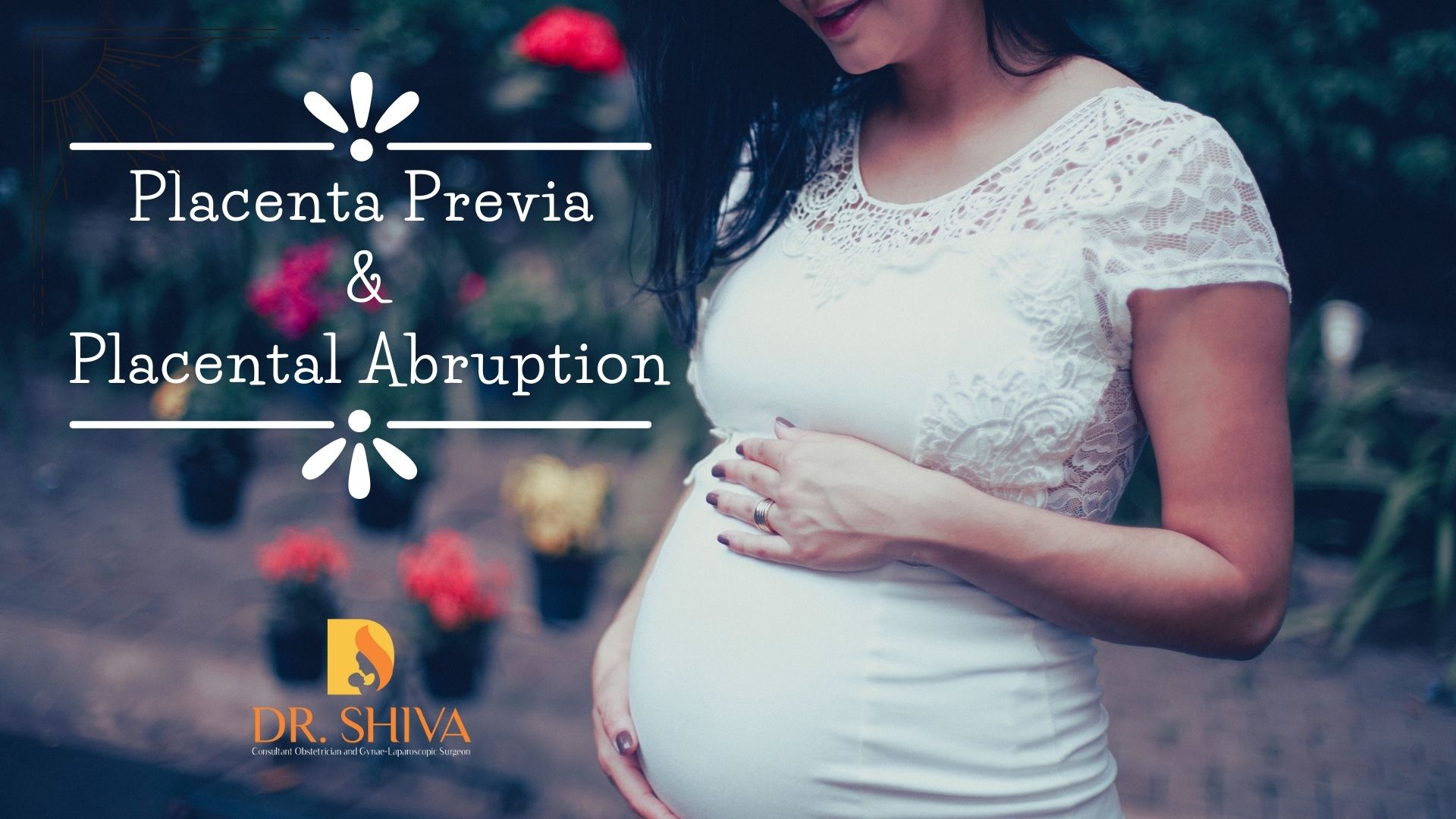
The placenta provides the fetus with nutrients and oxygen from the mother. Placenta previa is when the placenta implants itself very close or over the cervix. Placental abruption is when the placenta detaches itself from the implantation. If bleeding occurs in pregnancy after 20 weeks, there are chances it may be due to either of these.
Placenta Previa
When the placenta gets positioned very close to or over the cervix opening, a vaginal delivery is not possible as the pathway is obstructed by the placenta. It may be classified as
- Total – where the placenta completely covers the cervix opening.
- Partial – here the placenta partially covers the cervix opening.
- Marginal – where the placenta lies very close to the cervix.
Symptoms of Placenta previa
The main symptom is painless vaginal bleeding in the third trimester. Bleeding occurs because in the later stage of pregnancy the uterus starts thinning towards the bottom to accommodate the growing baby. This can result in tearing of the of the blood vessels that connect to the placenta and bleeding.
Causes for Placenta previa
- Scarring of the uterine lining/endometriosis
- Presence of Fibroids
- Smoking
- Having multiple babies
- Occurrence of Placenta previa in a previous pregnancy
- Previous surgeries or cesarean
- Multiple pregnancies
Risks associated with Placenta previa
- Slow fetal growth
- Birth defects in the baby
- Preterm birth
- Fetal distress
- Hemorrhage for the mother
- Hysterectomy
Treatment for Placenta previa
There is no treatment to change the position. Multiple scans will be taken to access the situation and any of the following may be suggested taking into consideration the health of the mother and the condition of the fetus
- Bedrest for few days.
- Admit at the hospital if the mother and baby need to be under observation to make sure everything is fine.
- Try to deliver the baby (in most cases c section is advised if there are chances of severe blood loss).
Placental abruption
Also known as abruptio placenta, it is the premature separation of the placenta from its implantation. If it detaches bleeding starts. Larger the area that detaches more will be the bleeding. Placental abruption can be life threatening to both mother and baby if not treated on time.
Symptoms for Placental abruption
The main symptom is bleeding but it doesn’t happen for all as sometimes the blood may also be trapped behind the placenta. Other symptoms include
- Abdominal pain
- Reduced fetal movement
- Uterine contractions
Cause for Placenta abruption
Trauma to the uterus like an accident can cause this. Other reasons include
- Smoking
- Multiple pregnancies
- High blood pressure
Risks associated with placenta abruption
- Premature or Stillbirth
- Hemorrhage or blood clotting
- Baby not getting enough oxygen
Diagnosis for Placental abruption
Ultrasound will be taken to identify the location and an analysis will be done to access how serious is the situation. They are of three levels,
- Grade1 – slight bleeding with no fetal distress
- Grade2 – mild bleeding and fetal distress
- Grade3 – severe bleeding, low blood pressure, continuous uterine contractions, fetal death.
Treatment for Placental abruption
The treatment will be based on many factors like the health and tolerance of both mother and baby, the number of weeks completed in pregnancy, the position of the placenta, the blood loss that has occurred, etc. If not serious they may suggest bed rest and medicines to fasten the baby’s development. If serious they may consider delivering the baby immediately, often by Cesarean.
For any more details kindly contact us.

